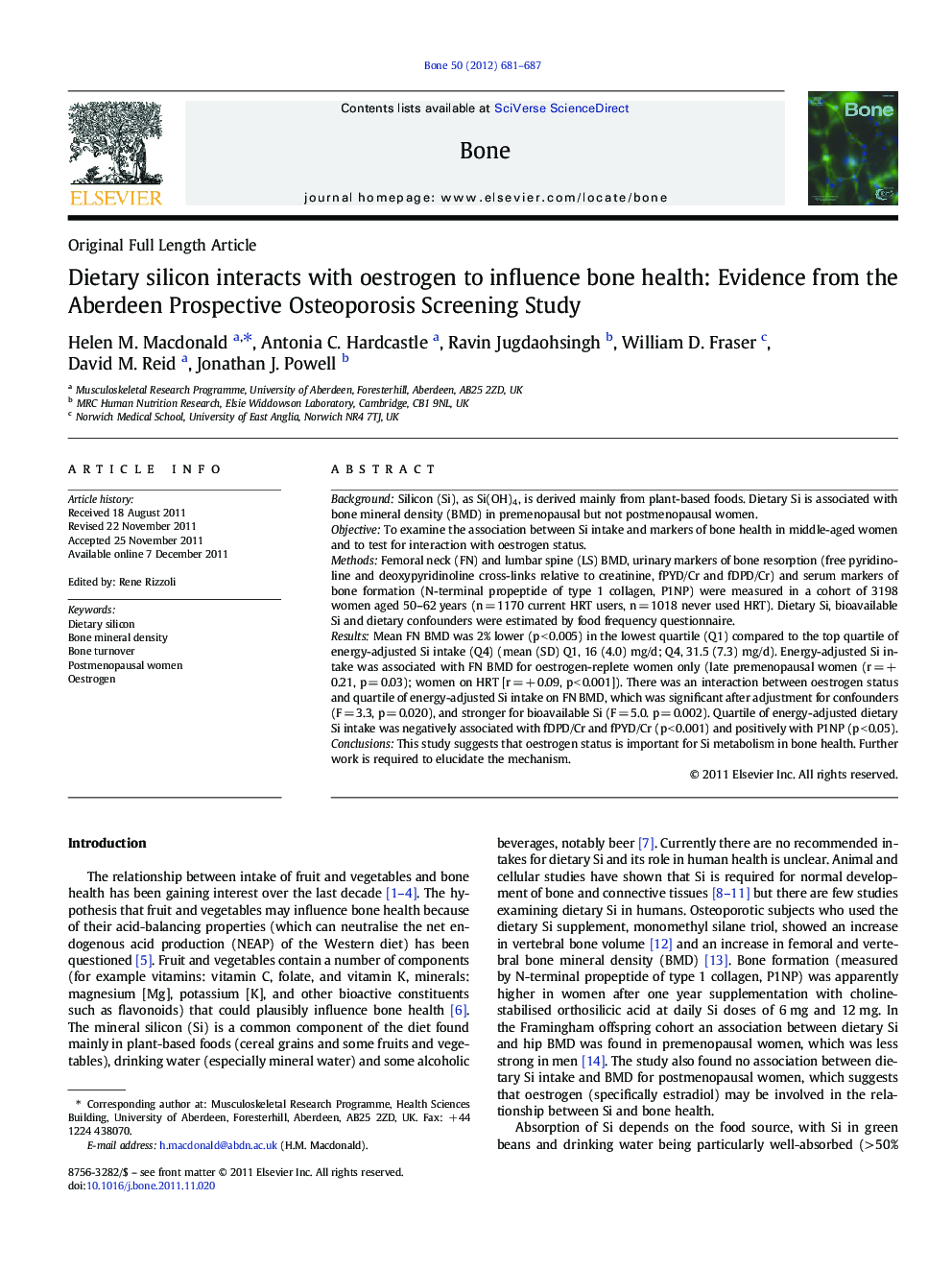| کد مقاله | کد نشریه | سال انتشار | مقاله انگلیسی | نسخه تمام متن |
|---|---|---|---|---|
| 2779657 | 1153279 | 2012 | 7 صفحه PDF | دانلود رایگان |

BackgroundSilicon (Si), as Si(OH)4, is derived mainly from plant-based foods. Dietary Si is associated with bone mineral density (BMD) in premenopausal but not postmenopausal women.ObjectiveTo examine the association between Si intake and markers of bone health in middle-aged women and to test for interaction with oestrogen status.MethodsFemoral neck (FN) and lumbar spine (LS) BMD, urinary markers of bone resorption (free pyridinoline and deoxypyridinoline cross-links relative to creatinine, fPYD/Cr and fDPD/Cr) and serum markers of bone formation (N-terminal propeptide of type 1 collagen, P1NP) were measured in a cohort of 3198 women aged 50–62 years (n = 1170 current HRT users, n = 1018 never used HRT). Dietary Si, bioavailable Si and dietary confounders were estimated by food frequency questionnaire.ResultsMean FN BMD was 2% lower (p < 0.005) in the lowest quartile (Q1) compared to the top quartile of energy-adjusted Si intake (Q4) (mean (SD) Q1, 16 (4.0) mg/d; Q4, 31.5 (7.3) mg/d). Energy-adjusted Si intake was associated with FN BMD for oestrogen-replete women only (late premenopausal women (r = + 0.21, p = 0.03); women on HRT [r = + 0.09, p < 0.001]). There was an interaction between oestrogen status and quartile of energy-adjusted Si intake on FN BMD, which was significant after adjustment for confounders (F = 3.3, p = 0.020), and stronger for bioavailable Si (F = 5.0. p = 0.002). Quartile of energy-adjusted dietary Si intake was negatively associated with fDPD/Cr and fPYD/Cr (p < 0.001) and positively with P1NP (p < 0.05).ConclusionsThis study suggests that oestrogen status is important for Si metabolism in bone health. Further work is required to elucidate the mechanism.
► The mechanism for the benefits of fruit and vegetable intakes on bone is uncertain.
► Silicon, a mineral influencing animal bone health may affect human bone health.
► Dietary silicon was associated with postmenopausal bone turnover and BMD.
► Adjusting for confounders, dietary silicon interacted with estrogen status on BMD.
Journal: Bone - Volume 50, Issue 3, March 2012, Pages 681–687